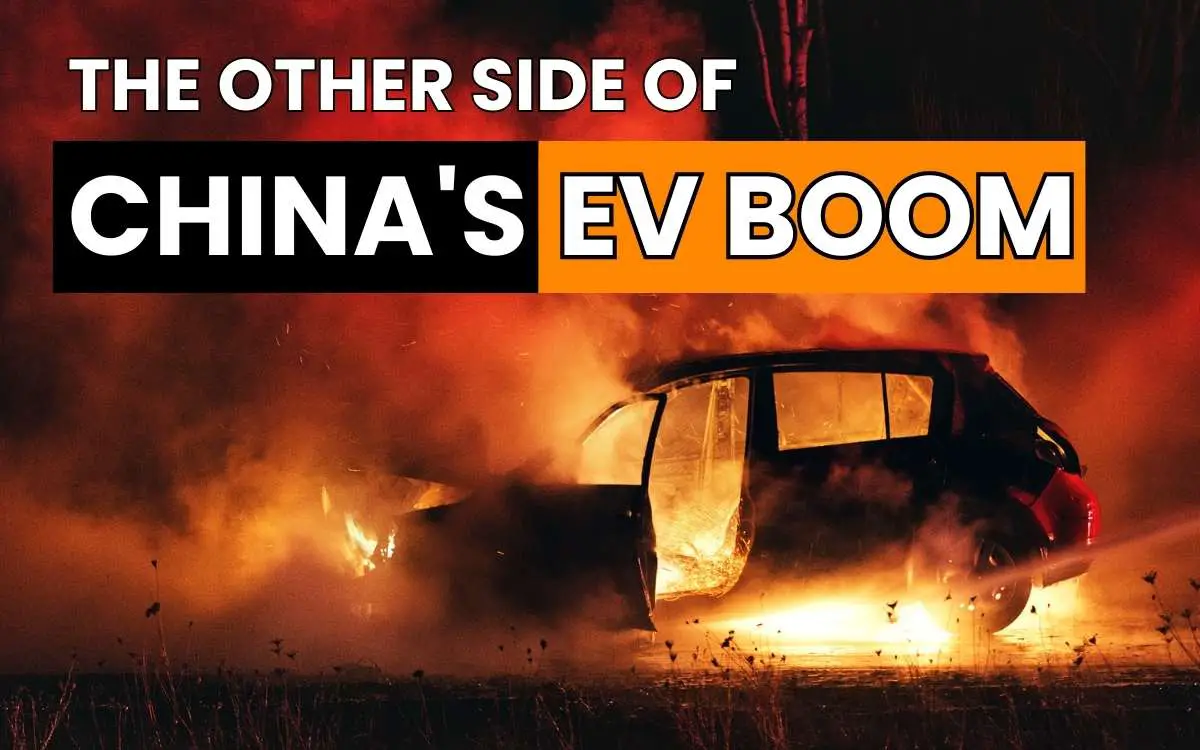Revolutionizing the Auto Industry or a Risky Gamble? Unveiling the Startling Reality of China’s Electric Vehicle Craze
In recent years, China has been riding the electric vehicle (EV) wave with fervor, touting them as the future of transportation.
However, beneath the glossy surface of this EV revolution lies a shocking truth that’s leaving many questioning the safety and viability of these vehicles.
As the Chinese government pushes for rapid electrification, alarming incidents of EVs spontaneously combusting have come to light, painting a grim picture of the so-called “new energy” vehicles.
The Reality: Spontaneous Combustion of EVs
While the allure of EVs is undeniable – reduced emissions, quieter engines, and potential cost savings – a disturbing trend is emerging: spontaneous combustion.
Imagine driving along, minding your own business, when suddenly, your EV bursts into flames.
This nightmare scenario isn’t as rare as you might think. Videos circulating online depict the shocking scenes of EVs engulfed in flames, often with little to no warning.
Experts explain that these fires are triggered by a phenomenon called thermal runaway, which occurs when a defective or damaged lithium-ion battery cell overheats and ignites, setting off a chain reaction.
Once ignited, these fires can burn for hours, making them extremely difficult to extinguish. Victims have reported that these fires can erupt just moments after a collision, leaving occupants with scant time to escape.
Technical Details Behind EV Fires
The Chinese government’s push for new energy vehicles encompasses all-electric, extended-range electric, and hybrid vehicles.
The heart of an EV – the battery pack – consists of thousands of lithium-ion cells attached to the chassis. When a battery is faulty, damaged, or malfunctions, it can lead to thermal runaway and eventual combustion.
Experts highlight that EV fires can reignite even after initial extinguishing attempts, making it safer to allow the vehicle to burn itself out.
Despite claims to the contrary, statistics reveal that the spontaneous combustion rate of EVs is notably higher than traditional gas vehicles.
- Spontaneous combustion rate of EVs in 2022: 2-3 out of 10,000
- Spontaneous combustion rate of fuel vehicles: 1-2 out of 10,000
These alarming incidents are occurring even when EVs are parked or charging, leaving owners and bystanders baffled and concerned.
Chinese NEV Development: A Double-Edged Sword
China’s aggressive push for new energy vehicles has undeniably transformed the automotive landscape, with EV manufacturing experiencing a rapid boom.
The government’s financial incentives and subsidies fueled a frenzy akin to the historical Great Leap campaign.
However, the zeal for mass EV adoption has also led to issues that must be addressed:
Quality & Sustainability Concerns
- Questionable Development Practices: China’s EV boom led to a surge in manufacturers and models, with over 450 companies and 5,827 vehicle models passing compliance tests. This massive proliferation lacks the stringent standards seen in developed countries. The haste to flood the market with NEVs has resulted in quality control issues and uneven reliability.
- Battery Technology and Sustainability: The race to electrify vehicles has outpaced battery technology and sustainable practices. Battery disposal and recycling are pressing concerns, as EVs contain non-biodegradable heavy metals. The environmental implications of improper disposal could outweigh the benefits of reduced emissions.
- Charging Woes: Inadequate charging infrastructure, especially in rural areas, and long wait times at charging stations are driving frustrations among EV owners. Frequent charging station failures and even dangerous incidents further tarnish the EV experience.
- Mileage Miscalculation: The range of Chinese EVs often falls far short of official claims due to unrealistic lab testing. Real-world factors like temperature changes, driving habits, and air conditioning usage are often ignored, leaving owners with a vehicle that can’t perform as promised.
Economical Concerns
- Financial Strain: While initial subsidies boosted EV sales, the long-term financial burden has hit both consumers and public transit systems hard. Premature battery failures have forced cities to suspend public transportation services, leaving citizens stranded. This reality raises questions about the true cost-effectiveness of the rapid transition to EVs.
- Sham Battery Warranties: While some EV manufacturers offer battery warranties, they often cover maintenance rather than direct replacements. This leaves EV owners facing steep costs for battery replacement, undermining the perceived economic benefits of EV ownership. Replacing a battery can cost $8,000 to $13,000 (equivalent to 2/5th of the new EV cost)
- Depreciation Disaster: Chinese EVs suffer from shockingly low-value retention rates, with prices plummeting to less than 30% of their original cost within just a few years. This drastic depreciation casts doubt on the long-term financial benefits of EV ownership.
The Bitter Aftertaste: Reality Checks Amidst the Hype
The fervor surrounding China’s EV boom is being met with a bitter reality check.
While EVs promise a cleaner future, the current landscape is riddled with safety concerns, technical limitations, and financial pitfalls.
The dark side of this rapid transition is casting a shadow over the once-bright promise of electric vehicles, leaving many to question whether the rush to electrify has come at too high a cost.
And, are these concerns only about Chinese EVs? No!. While some issues are specific to China, most concerns remain valid for all EVs in general.
As consumers and policymakers grapple with these unsettling revelations, one thing is clear: the road to a sustainable automotive future might be longer and more complex than initially anticipated.
The dream of emission-free transportation remains a noble pursuit, but it’s crucial to navigate this path with caution, ensuring that the safety and well-being of all stakeholders are prioritized above all else.
You may also like to read:






Leave a Reply